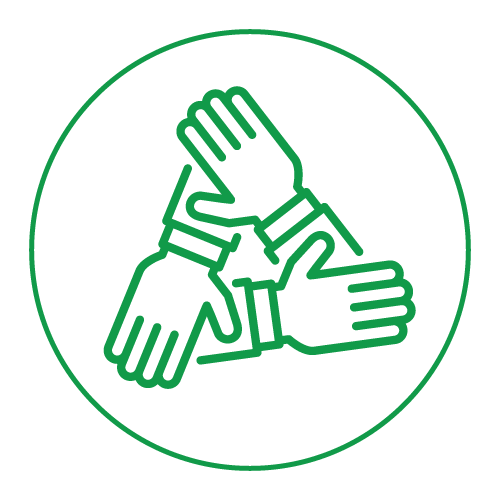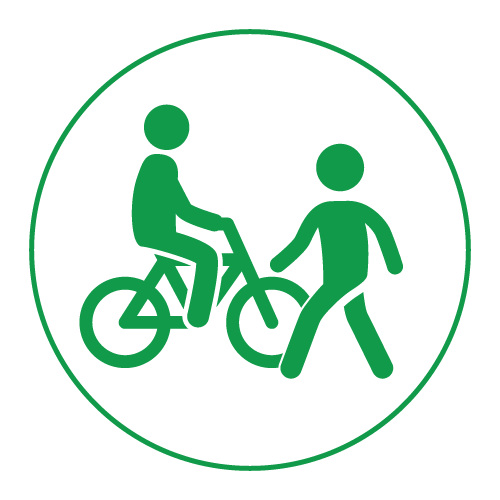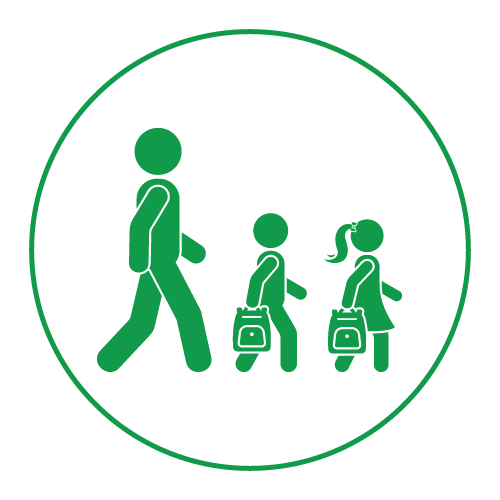Build Your Safe Routes to School Team
A Safe Routes to School (SRTS) team has a common goal of increasing the number of students walking and bicycling to school and is comprised of community members with diverse backgrounds and interests. The SRTS team consists of: Champions and Stakeholders.
Champions are two to four people dedicated to leading and coordinating the team’s efforts in building an effective SRTS program by developing and evaluating goals for the community and monitoring the program’s effectiveness in the future. Champions might be:
- PTA/PTO Representatives
- Principals
- Teachers
- Local Bicycle/Pedestrian Advocates
- Members of Green Team
- School District or Board of Education Representatives
- Communications/Marketing Representatives from school districts, municipalities, etc.
- Regional Coordinators
Stakeholders represent interests of the school and community in the form of a SRTS Task Force and can share insight into policies that might help shape the SRTS program. The Task Force of stakeholders can be comprised of:
- Parents
- Students
- Teachers
- School Administrators
- Local Municipal Officials
- Law Enforcement Officers
- Crossing guards
- Local Business Owners
- Municipal Engineers/Urban Planners
- Green Team Members
- County Representatives
- Advocates from Community Organizations (traffic safety, children’s health and wellness, bicycling/pedestrian safety, etc.)
Team Meetings
The SRTS team should be flexible and allow for members to work together or separately depending on what is most practical or convenient, however some face-to-face time should take place at the beginning of the process. Team meetings should review SRTS benefits and begin to identify goals specific to your school or community. You should also plan to establish your Task Force, make preliminary decisions on SRTS actions to initiate, and agree on a calendar of tentative meeting dates. In addition, some of the best input comes from students, and their ideas can be collected through surveys, classroom exercises and/or art projects, and then presented to the SRTS team at a meeting.
SRTS Team Roles and Responsibilities
Outlined below are some typical roles for SRTS team members:
School/School District Representatives – Program Facilitators
| Role | Responsibilities |
|---|---|
| School Parents |
|
| Superintendents |
|
| Board of Education and Other District Administrators |
|
| Principals |
|
| Teachers |
|
| English as a Second Language (ESL) Teachers |
|
| Other Staff |
|
| Communications Specialists |
|
| Students |
|
Municipal/County Government Representatives – Community Partners
| Role | Responsibilities |
|---|---|
| Mayor/Council/Freeholders |
|
| Police Department |
|
| Crossing Guards |
|
| Traffic Engineering |
|
| Planning Department |
|
| Parks/Recreation Department |
|
| Environmental Department |
|
| Economic Development Department |
|
Community Representatives – Knowledgeable and Supportive Neighbors
| Role | Responsibilities |
|---|---|
| Bicycle/Pedestrian Advocates |
|
| Other Local Advocates |
|
| Regional Advocates |
|
| Business Owners |
|
| Planning Department |
|
| Parks/Recreation Department |
|
| Environmental Department |
|
| Economic Development Department |
|





